Effects of Lean Zones on Steam-Assisted Gravity Drainage Performance
Abstract
:1. Introduction
2. Numerical Model
2.1. Methodology
2.2. Results and Discussion
3. Field Application
3.1. Methodology
3.2. Results and Discussion
4. Conclusions
- (1)
- Compared with the BIP and BP types, the single-layer lean zone above the injector affects the SAGD performance the most. With the decrease of interval distance and increase of thickness and water saturation in the lean zones, the detrimental effect of single-layer lean zones on SAGD performance increases; the effect of the thickness is the most significant among these three parameters.
- (2)
- With the increase of period and decrease of connate and initial water saturations in the lean zones, the detrimental effect of multiple-layer lean zones on SAGD performance increases; the connate water saturation affects the SAGD performance the most among these three parameters. Reducing the injection pressure to some extent improves SAGD performance in leaky oil sands, as it prevents the steam chamber from penetrating the lean zone too early.
- (3)
- SAGD production in the Long Lake reservoir is being negatively affected by lean zones, where well pair 1 is most affected due to the widest distribution of lean zones above its injector (AI type). Considering the low injection pressure due to the existence of lean zones, a hybrid CSS/SAGD method is proposed, which combines the advantages of CSS (pressure drop between huff and puff phases) and SAGD (gravity drainage). Although the SORs are comparable, the cumulative oil production of the hybrid CSS/SAGD method is 82,072 m3 higher than that of the conventional SAGD method.
Supplementary Materials
Acknowledgments
Author Contributions
Conflicts of Interest
Abbreviations
| number of layer in the numerical model, dimensionless | |
| appearance period of lean zones, dimensionless | |
| water saturation of the lean zone, dimensionless | |
| residual oil saturation, dimensionless | |
| water saturation, dimensionless | |
| connate water saturation, dimensionless | |
| layer’s water saturation in the model with multiple-layer lean zones, dimensionless |
References
- Giacchetta, G.; Leporini, M.; Marchetti, B. Economic and environmental analysis of a Steam Assisted Gravity Drainage (SAGD) facility for oil recovery from Canadian oil sands. Appl. Energy 2015, 142, 1–9. [Google Scholar] [CrossRef]
- Huang, R.; McPhedran, K.N.; Yang, L.; El-Din, M.G. Characterization and distribution of metal and nonmetal elements in the Alberta oil sands region of Canada. Chemosphere 2016, 147, 218–229. [Google Scholar] [CrossRef] [PubMed]
- Hudson, P.V. History of environmental contamination by oil sands extraction. Proc. Natl. Acad. Sci. USA 2013, 110, 1569–1570. [Google Scholar] [CrossRef] [PubMed]
- Dusseault, M.B.; Shafiei, A. Oil Sands. Ullmann’s Encyclopedia of Industrial Chemistry; John Wiley & Sons: New York, NY, USA, 2011; p. 52. [Google Scholar]
- Dusseault, M.B. Screening criteria and technology sequencing for in-situ viscous oil production. In Heavy-Oil and Oil-Sand Petroleum Systems in Alberta and Beyond; Studies in Geology 64; Hein, F.J., Leckie, D.A., Larter, S., Suter, J.R., Eds.; American Association of Petroleum Geologists: Boulder, CO, USA, 2013; pp. 655–668. [Google Scholar]
- Butler, R. SAGD comes of age! J. Can. Petrol. Technol. 1998, 37, 9–12. [Google Scholar] [CrossRef]
- Butler, R. Steam-assisted gravity drainage: Concept, development, performance and future. J. Can. Petrol. Technol. 1994, 33, 44–50. [Google Scholar] [CrossRef]
- Ito, Y.; Ipek, G. Steam fingering phenomenon during SAGD process. In Proceedings of the SPE International Thermal Operations and Heavy Oil Symposium, Calgary, AB, Canada, 1–3 November 2005; Society of Petroleum Engineers: Houston, TX, USA, 2005. [Google Scholar]
- Cyr, T.; Coates, R.; Polikar, M. Steam-Assisted Gravity Drainage Heavy Oil Recovery Process. U.S. Patent 6,257,334, 10 July 2001. [Google Scholar]
- Alvarez, J.; Moreno, R.; Sawatzky, R.P. Can SAGD be exported? Potential challenges. In Proceedings of the SPE Heavy and Extra Heavy Oil Conference, Medellin, Colombia, 24–26 September 2014; Society of Petroleum Engineers: Houston, TX, USA, 2014. [Google Scholar]
- Baker, R.O.; Rodrigues, K.; Sandhu, K.S.; Jong, E.S.W. Key parameters in steam chamber development. In Proceedings of the Canadian Unconventional Resources and International Petroleum Conference, Calgary, AB, Canada, 19–21 October 2010; Society of Petroleum Engineers: Houston, TX, USA, 2010. [Google Scholar]
- Shin, H.; Choe, J. Shale barrier effects on the SAGD performance. In Proceedings of the SPE/EAGE Reservoir Characterization & Simulation Conference, Abu Dhabi, UAE, 19–21 October 2009; Society of Petroleum Engineers: Houston, TX, USA, 2009. [Google Scholar]
- Nasr, T.N.; Law, D.S.; Beaulieu, G.; Golbeck, H.; Korpany, G.; Good, W.K. SAGD application in gas cap and top water oil reservoirs. J. Can. Petrol. Technol. 2003, 42, 32–38. [Google Scholar] [CrossRef]
- Law, D.H.S.; Nasr, T.N.; Good, W.K. Field-scale numerical simulation of SAGD process with top-water thief zone. J. Can. Petrol. Technol. 2003, 42, 32–38. [Google Scholar] [CrossRef]
- Pooladi-Darvish, M.; Mattar, L. SAGD operations in the presence of overlying gas cap and water layer-effect of shale layers. J. Can. Petrol. Technol. 2002, 41, 40–51. [Google Scholar] [CrossRef]
- Masih, S.; Ma, K.; Sanchez, J.; Patino, F.; Boida, L. The effect of bottom water coning and its monitoring for optimization in SAGD. In Proceedings of the SPE Heavy Oil Conference, Calgary, AB, Canada, 12–14 June 2012; Society of Petroleum Engineers: Houston, TX, USA, 2012. [Google Scholar]
- Rodriguez, J.R.; Darche, G.; Espinasse, J. An innovative thermal production scheme for mobile heavy oil reservoirs with bottom aquifer. In Proceedings of the SPE Annual Technical Conference and Exhibition, Denver, CO, USA, 5–8 October 2003; Society of Petroleum Engineers: Houston, TX, USA, 2003. [Google Scholar]
- Saskoil, S.S.; Butler, R.M. The production of conventional heavy oil reservoirs with bottom water using steam-assisted gravity drainage. J. Can. Petrol. Technol. 1990, 29, 78–86. [Google Scholar] [CrossRef]
- Xu, J.; Chen, Z.; Zhong, H. Numerical simulation and optimization of steam-assisted Gravity Drainage in Long Lake Field with Lean Zone and Shale Layer. In Proceedings of the World Heavy Oil Congress, New Orleans, LA, USA, 5–7 March 2014; DMG Events Global Energy: London, UK, 2014. [Google Scholar]
- Xu, J.; Chen, Z.J.; Cao, J.; Li, R. Numerical study of the effects of lean zones on SAGD performance in periodically heterogeneous media. In Proceedings of the SPE Heavy Oil Conference-Canada, Calgary, AB, Canada, 10–12 June 2014; Society of Petroleum Engineers: Houston, TX, USA, 2014. [Google Scholar]
- Xu, J.; Chen, Z.J.; Yu, Y.; Cao, J. Numerical thermal simulation and optimization of hybrid CSS/SAGD process in Long Lake with lean zones. In Proceedings of the SPE Heavy Oil Conference-Canada, Calgary, AB, Canada, 10–12 June 2014; Society of Petroleum Engineers: Houston, TX, USA, 2014. [Google Scholar]
- Xu, J.; Chen, Z.; Li, R. 3D Geological modeling and uncertainty analysis of pilot pad in the Long Lake field with lean zone and shale layer. In Proceedings of the Geoconvention, Calgary, AB, Canada, 12–16 May 2014; Canada’s Energy Geoscientists and Canadian Society of Exploration Geophysicists and Canadian Well Logging Society: Calgary, AB, Canada, 2014. [Google Scholar]
- Xu, J. Effects of Lean Zones on SAGD Performance. Master’s Thesis, University of Calgary, Calgary, AB, Canada, 2015. [Google Scholar]
- Xu, J.; Pan, Y.; Chen, Z. Understanding impacts of lean zones on thermal recovery in view of mobile water. In Proceedings of the SPE Canada Heavy Oil Technical Conference, Calgary, AB, Canada, 7–9 June 2015; Society of Petroleum Engineers: Houston, TX, USA, 2015. [Google Scholar]
- Doan, L.T.; Baird, H.; Doan, Q.T.; Farouq Ali, S.M. Performance of the SAGD process in the presence of a water sand: A preliminary investigation. J. Can. Petrol. Technol. 2003, 42, 25–31. [Google Scholar] [CrossRef]
- Fairbridge, J.K.; Cey, E.; Gates, I.D. Impact of intraformational water zones on SAGD performance. J. Pet. Sci. Eng. 2012, 82, 187–197. [Google Scholar] [CrossRef]
- Cline, V.J.; Basham, M. Improving project performance in a heavy oil horizontal well project in the San Joaquin valley, California. In Proceedings of the SPE International Thermal Operations and Heavy Oil Symposium and International Horizontal Well Technology Conference, Calgary, AB, Canada, 4–7 November 2002; Society of Petroleum Engineers: Houston, TX, USA, 2002. [Google Scholar]
- Donnelly, J.K. The best process for Cold Lake: CSS vs. SAGD. J. Can. Petrol. Technol. 2000, 39, 5–7. [Google Scholar] [CrossRef]
- Escobar, M.A.; Valera, C.A.; Perez, R.E. A large heavy oil reservoir in Lake Maracaibo basin: Cyclic steam injection experiences. In Proceedings of the International Thermal Operations and Heavy Oil Symposium, Bakersfield, CA, USA, 10–12 February 1997; Society of Petroleum Engineers: Houston, TX, USA, 1997. [Google Scholar]
- Peng, S.; Yuan, A.; Jiang, H.; Zhang, S. Cyclic preheating test in SAGD horizontal wells of Liaohe Oilfield. In Proceedings of the International Oil and Gas Conference and Exhibition, Beijing, China, 8–10 June 2010; Society of Petroleum Engineers: Houston, TX, USA, 2010. [Google Scholar]
- Coskuner, G. A new process combining cyclic steam stimulation and steam-assisted gravity drainage: Hybrid SAGD. J. Can. Petrol. Technol. 2009, 48, 8–13. [Google Scholar] [CrossRef]
- Ghanbari, E.; Mighani, S.; Shaabani, E.; Alipour, R. Improving SAGD performance combining with CSS. In Proceedings of the International Petroleum Technology Conference, Bangkok, Thailand, 15–17 November 2011; Society of Petroleum Engineers: Houston, TX, USA, 2011. [Google Scholar]
- Kerr, R.K.; Jonasson, H.P. SAGDOX—Steam assisted gravity drainage with the addition of oxygen injection. In Proceedings of the SPE Heavy Oil Conference, Calgary, AB, Canada, 11–13 June 2013; Society of Petroleum Engineers: Houston, TX, USA, 2013. [Google Scholar]
- Long Lake Subsurface Performance Presentation. Available online: https://www.aer.ca/data-and-publications/activity-and-data/in-situ-performance-presentations (accessed on 29 March 2017).
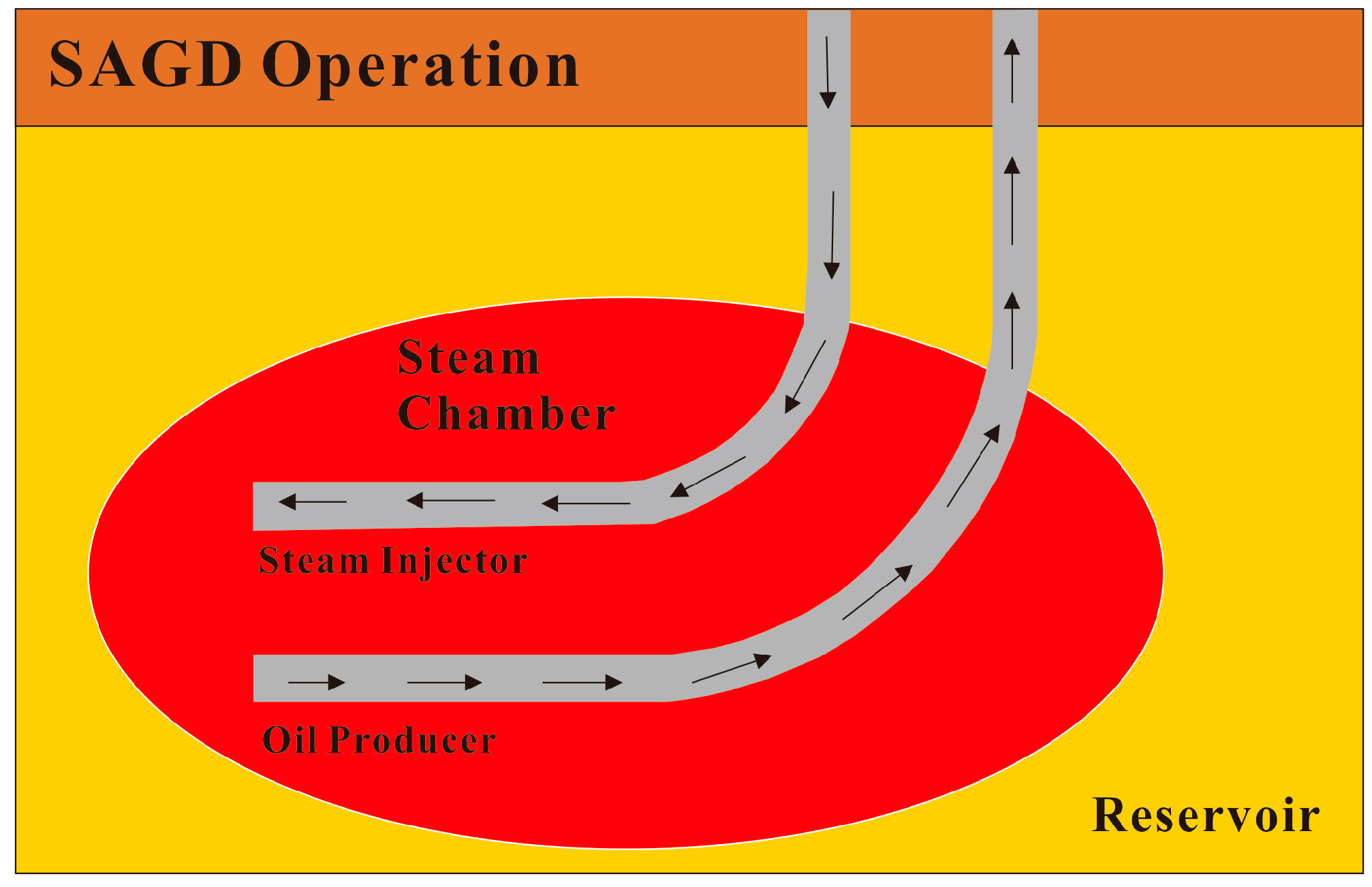
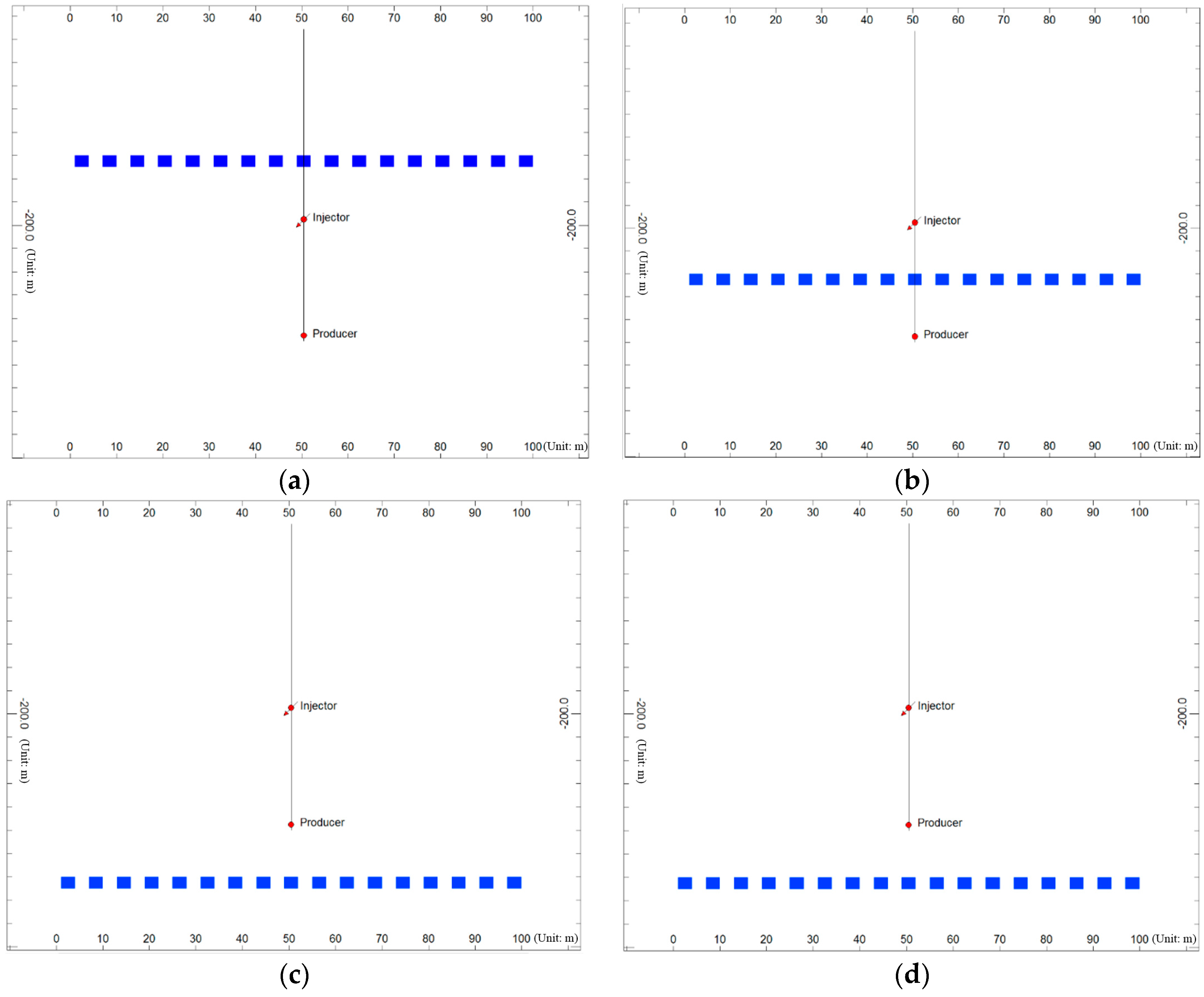
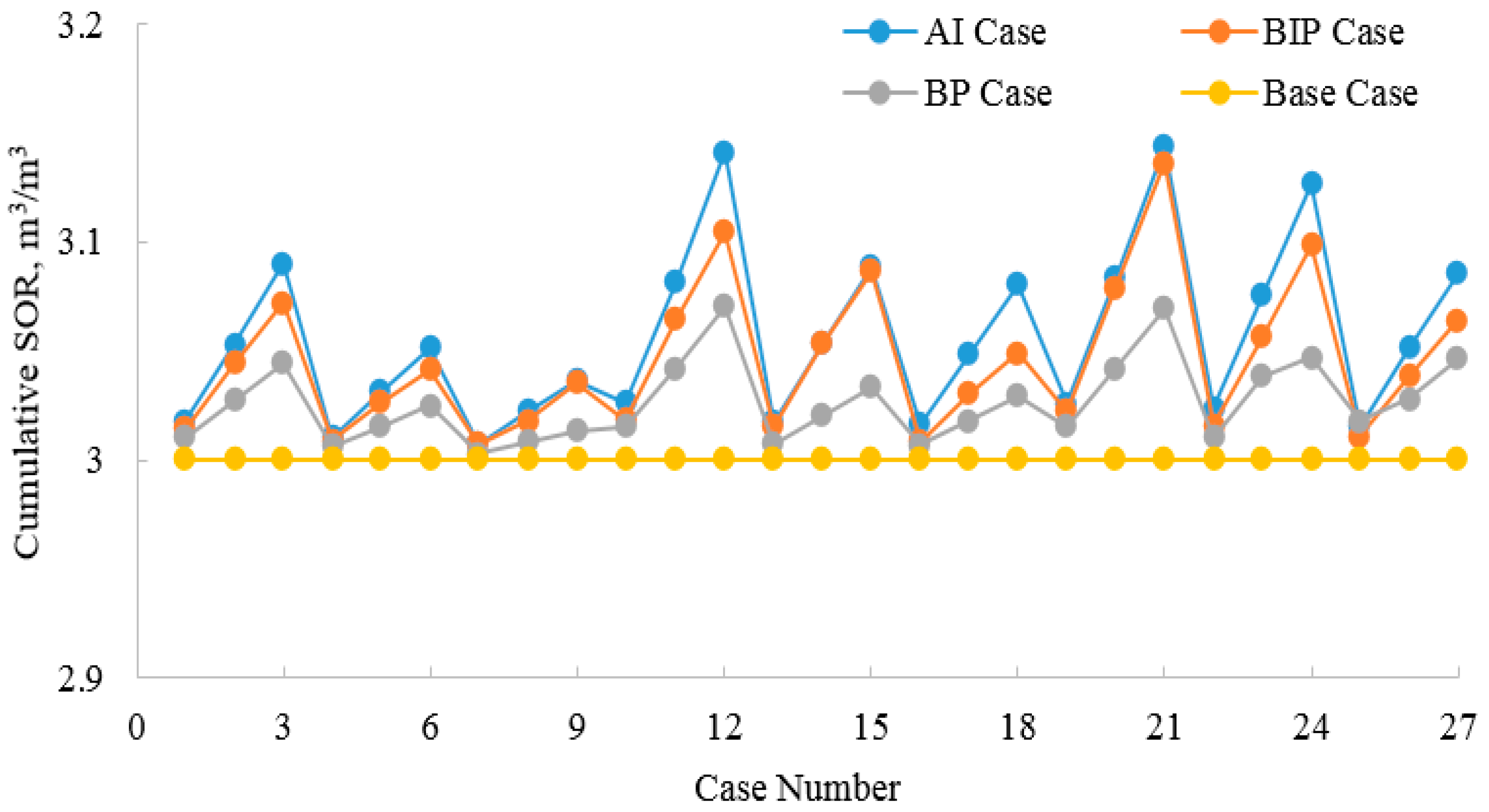

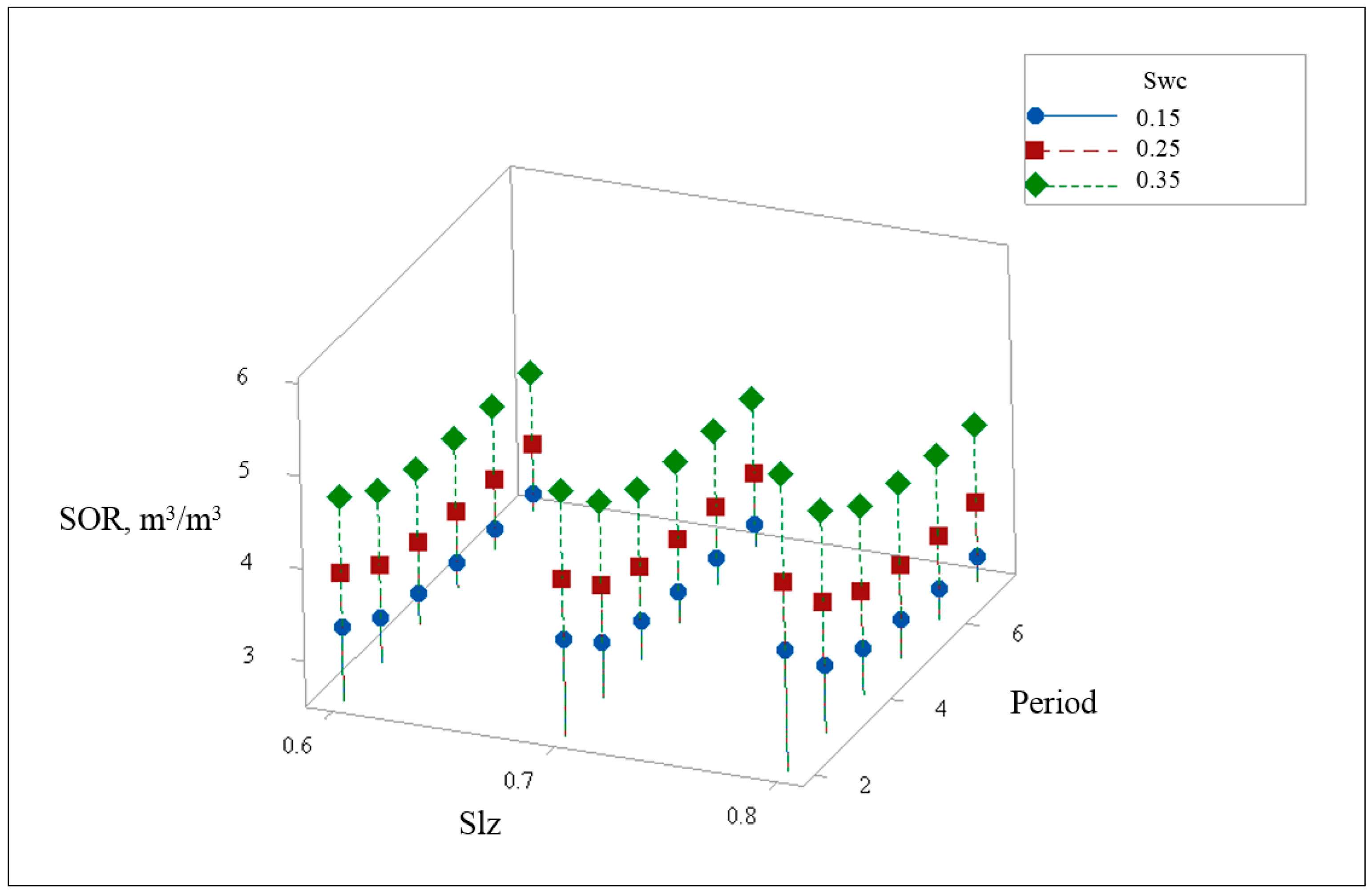



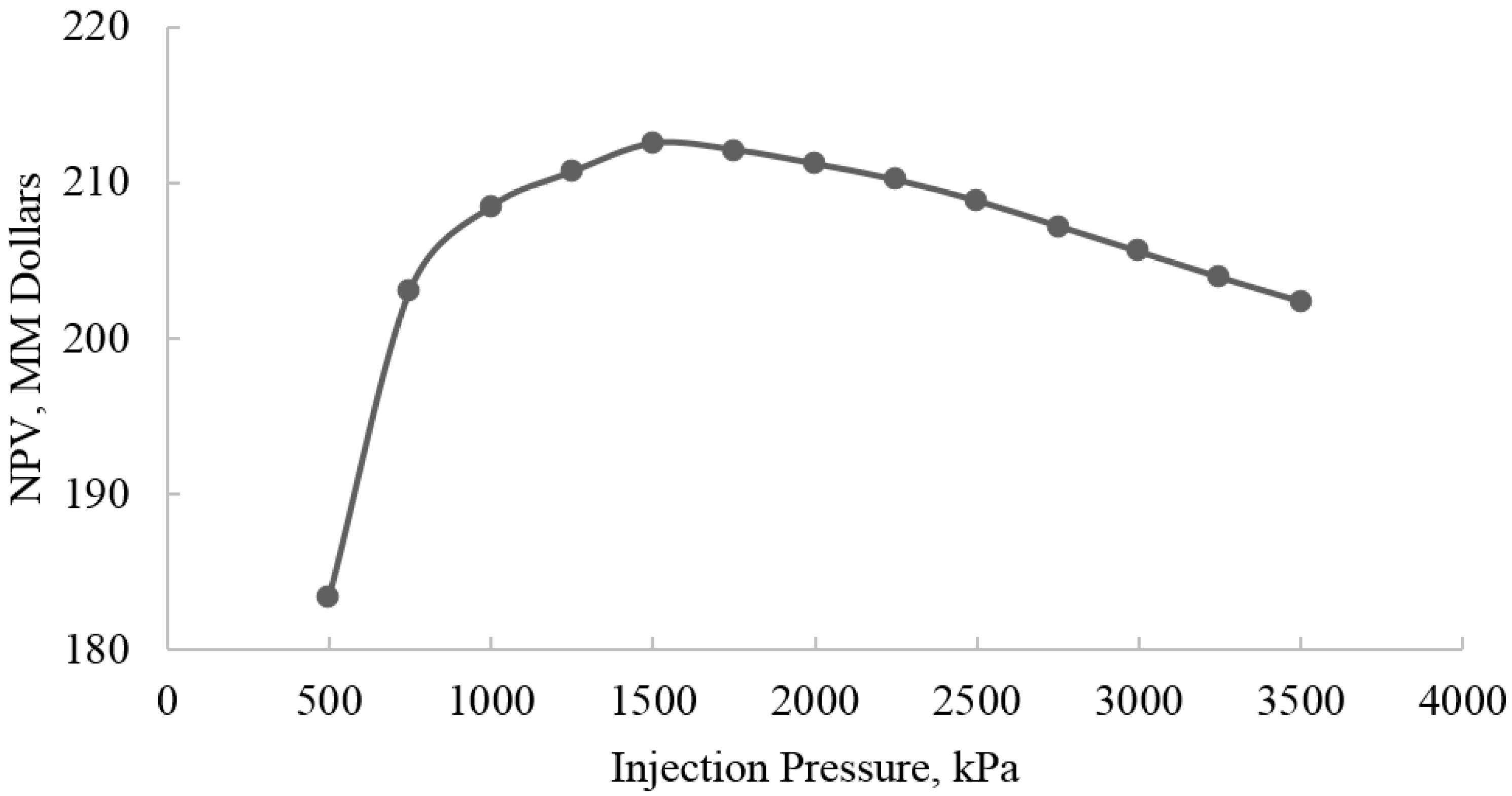

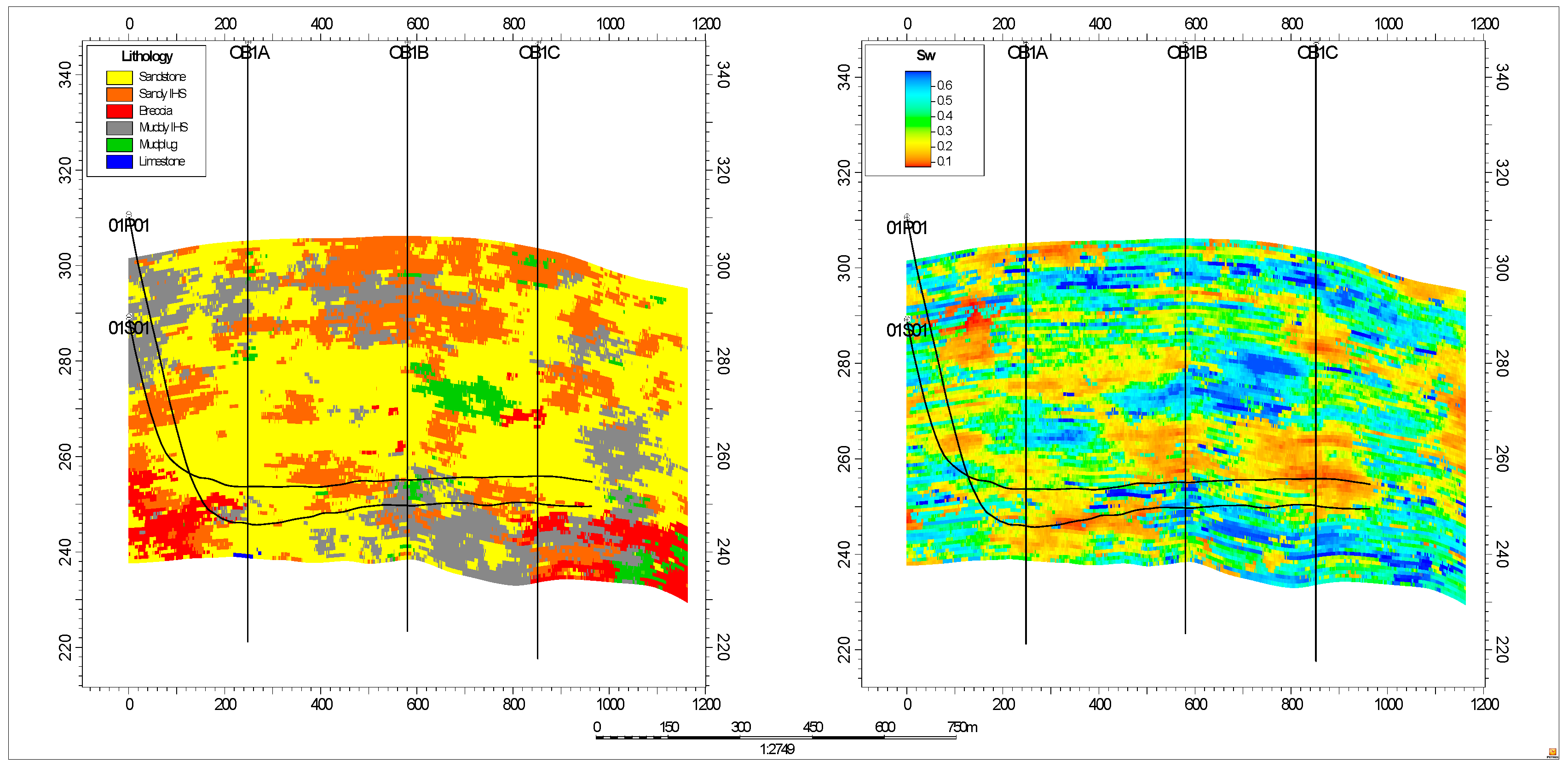
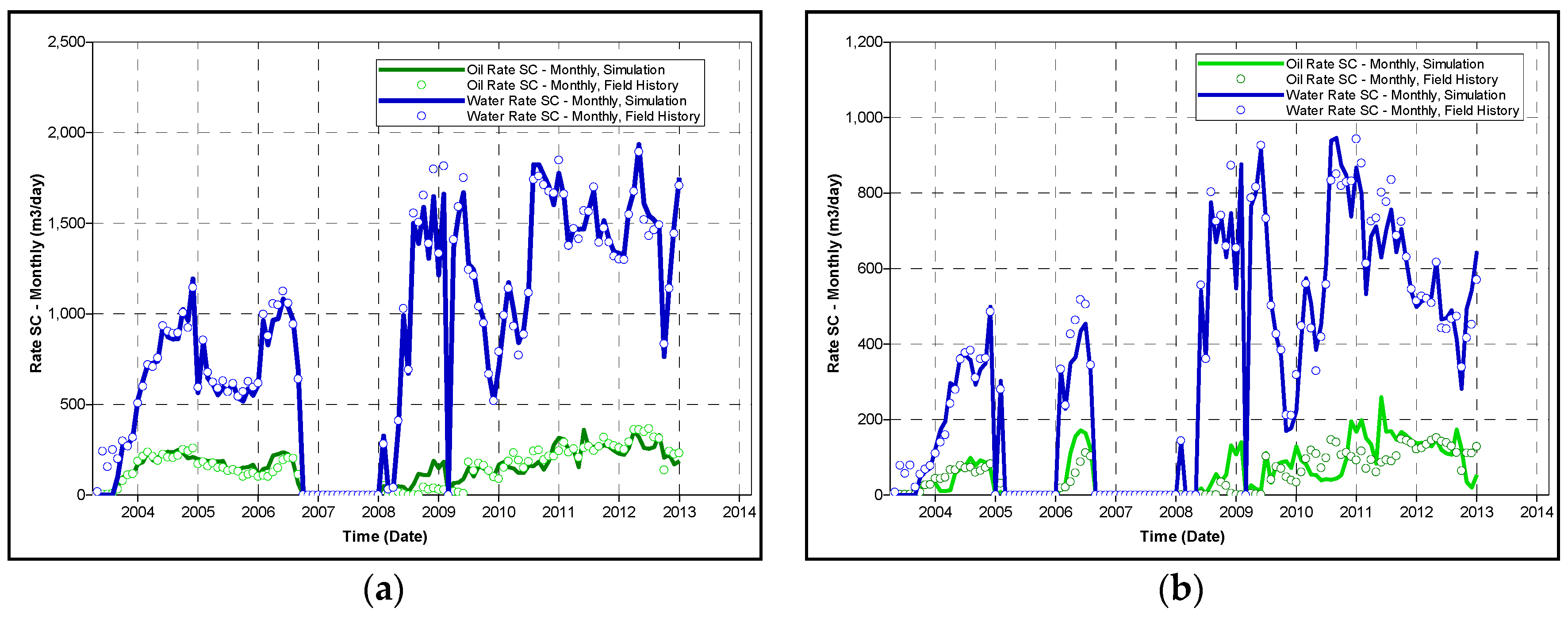
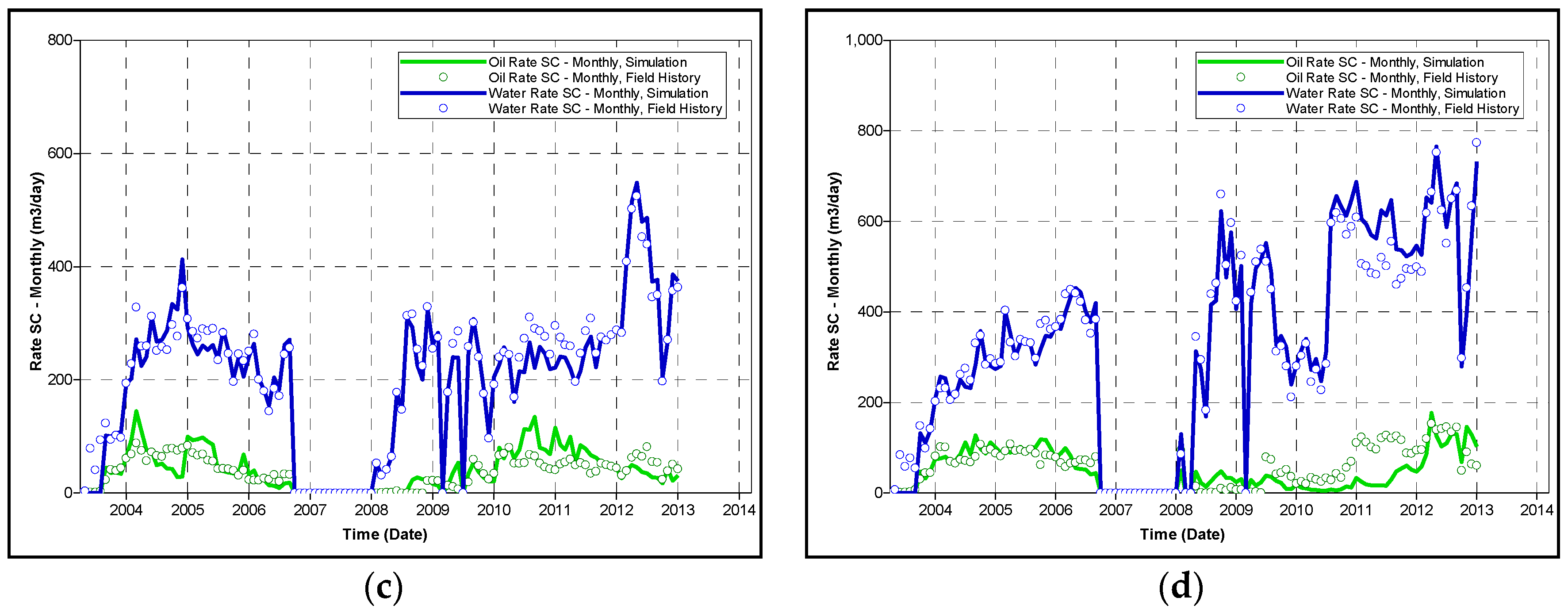
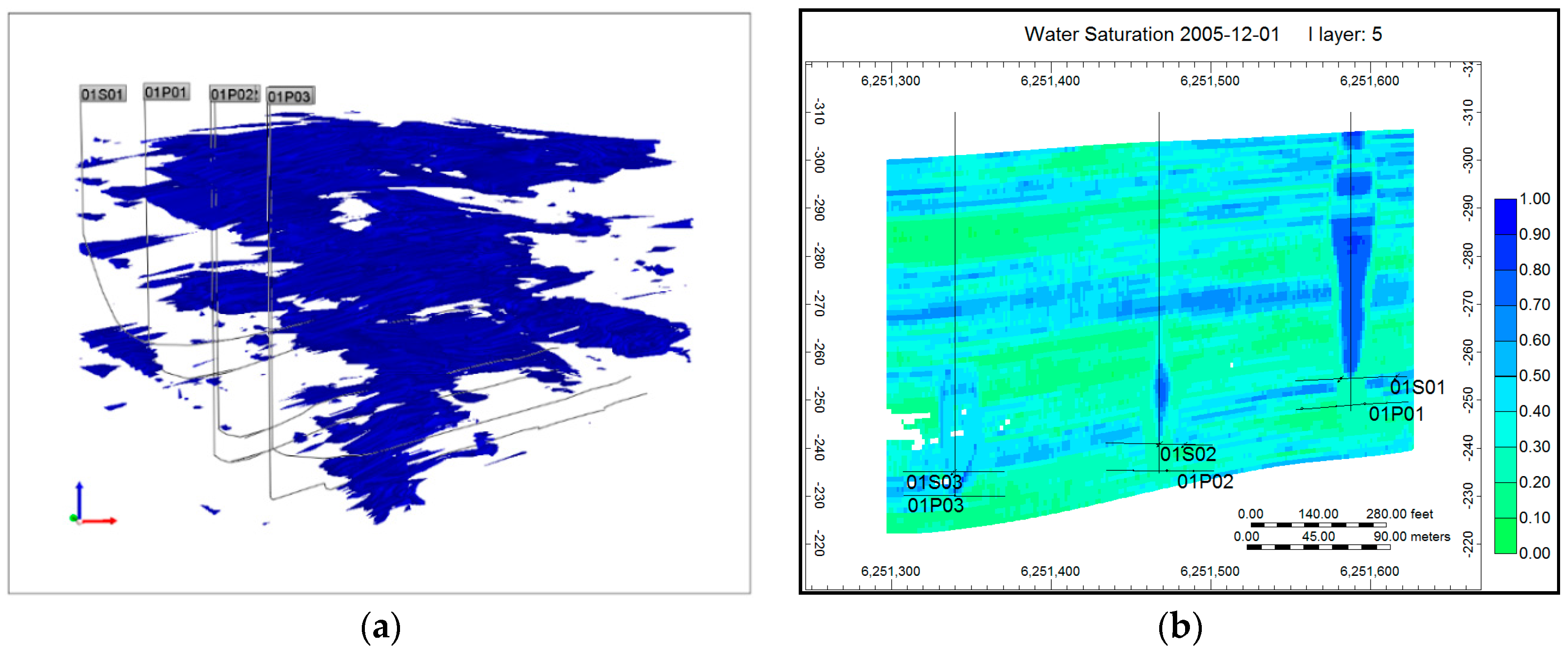
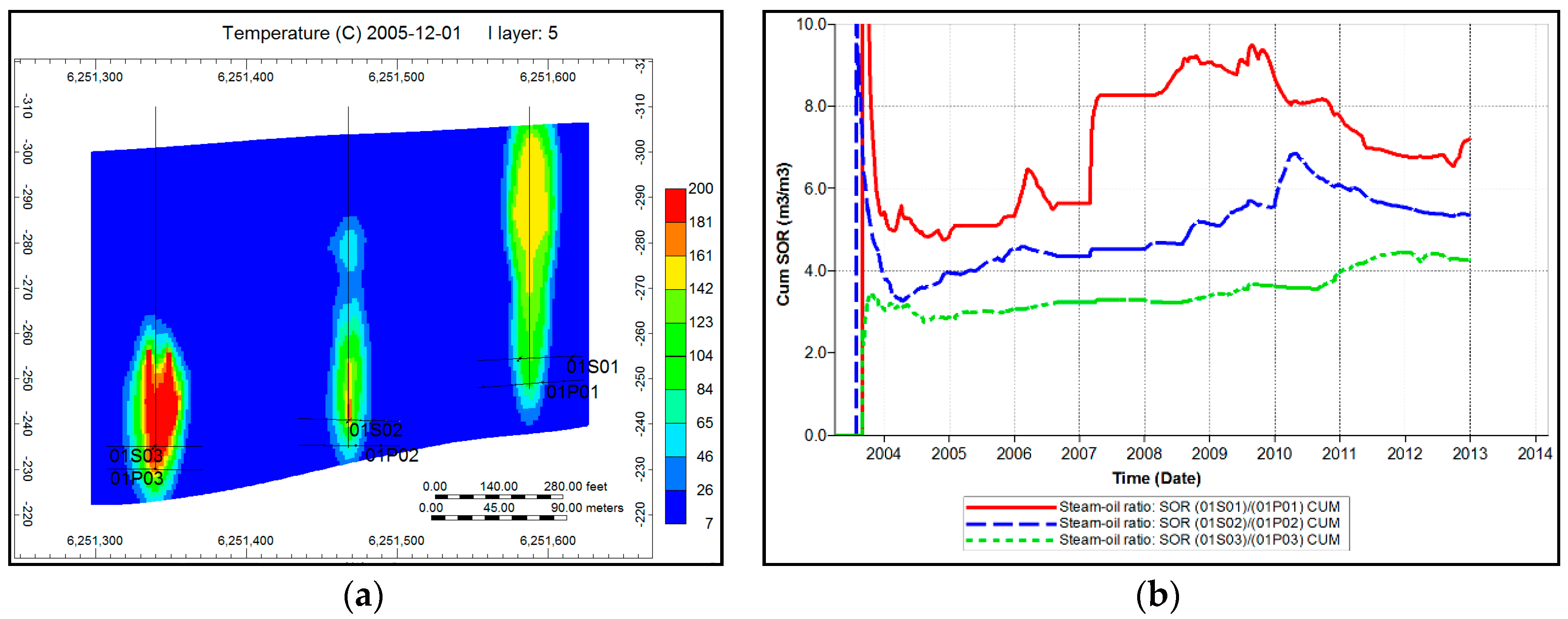
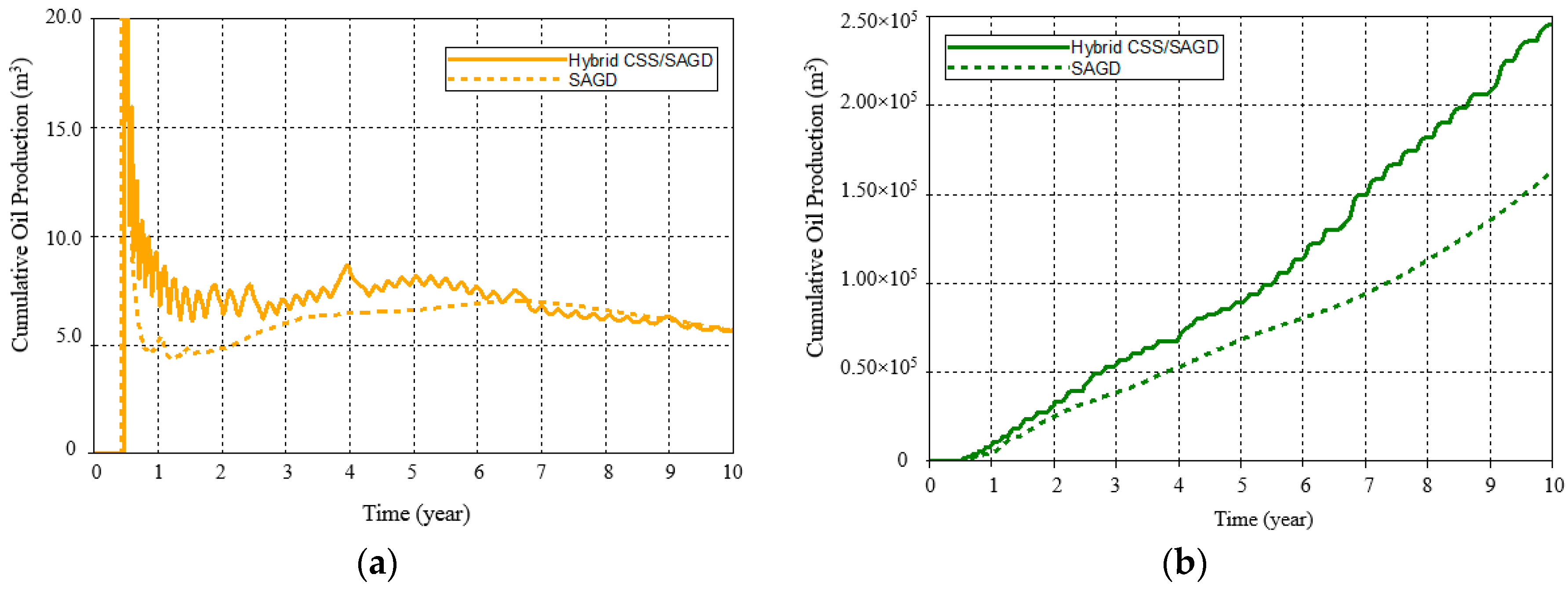
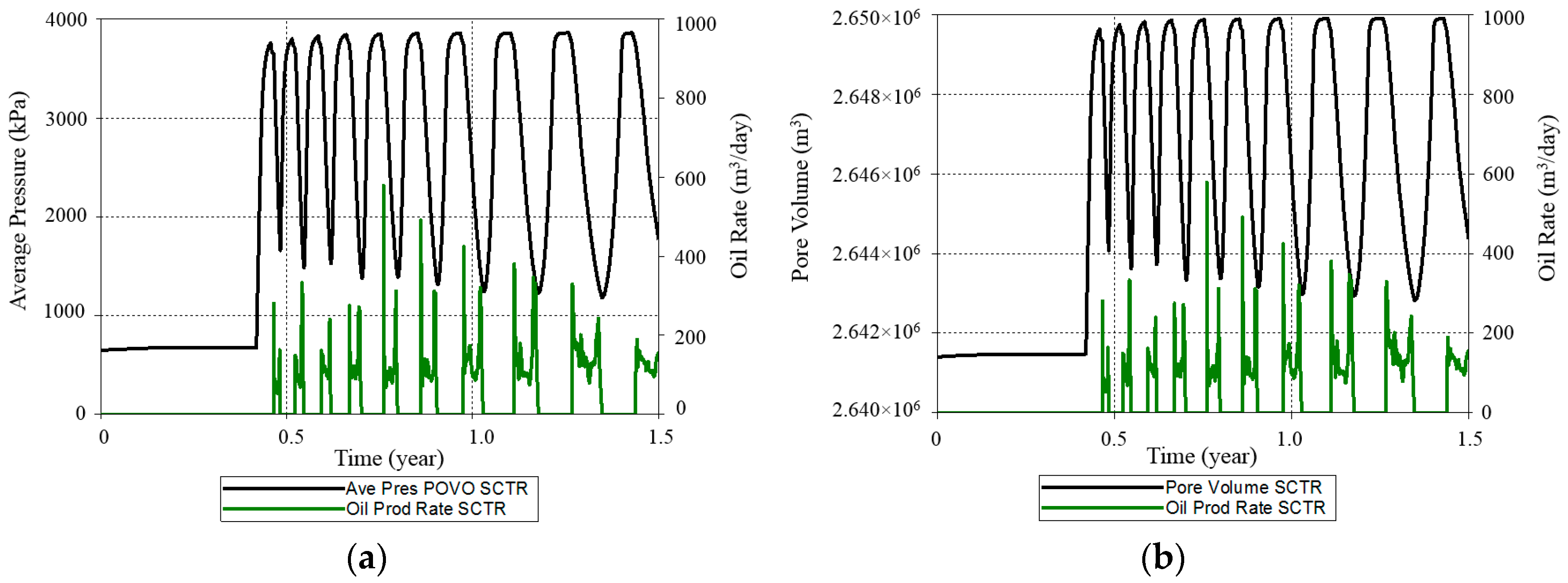

| Parameters | Value |
|---|---|
| Reservoir Pressure, kPa | 1050 |
| Depth of Grid Top, m | 230 |
| Reservoir Temperature, °C | 7 |
| Porosity | 0.307 |
| Horizontal Permeability, mD | 6292 |
| Vertical Permeability, mD | 4892 |
| Connate Water Saturation | 0.25 |
| Phase | Pair 1 | Pair 2 | Pair 3 |
|---|---|---|---|
| Phase 1 (Year 2003–2008) | 1280 | 1340 | 1490 |
| Phase 2 (Year 2009–2013) | 1670 | 1620 | 1530 |
© 2017 by the authors. Licensee MDPI, Basel, Switzerland. This article is an open access article distributed under the terms and conditions of the Creative Commons Attribution (CC BY) license (http://creativecommons.org/licenses/by/4.0/).
Share and Cite
Xu, J.; Chen, Z.; Dong, X.; Zhou, W. Effects of Lean Zones on Steam-Assisted Gravity Drainage Performance. Energies 2017, 10, 471. https://doi.org/10.3390/en10040471
Xu J, Chen Z, Dong X, Zhou W. Effects of Lean Zones on Steam-Assisted Gravity Drainage Performance. Energies. 2017; 10(4):471. https://doi.org/10.3390/en10040471
Chicago/Turabian StyleXu, Jinze, Zhangxin Chen, Xiaohu Dong, and Wei Zhou. 2017. "Effects of Lean Zones on Steam-Assisted Gravity Drainage Performance" Energies 10, no. 4: 471. https://doi.org/10.3390/en10040471






